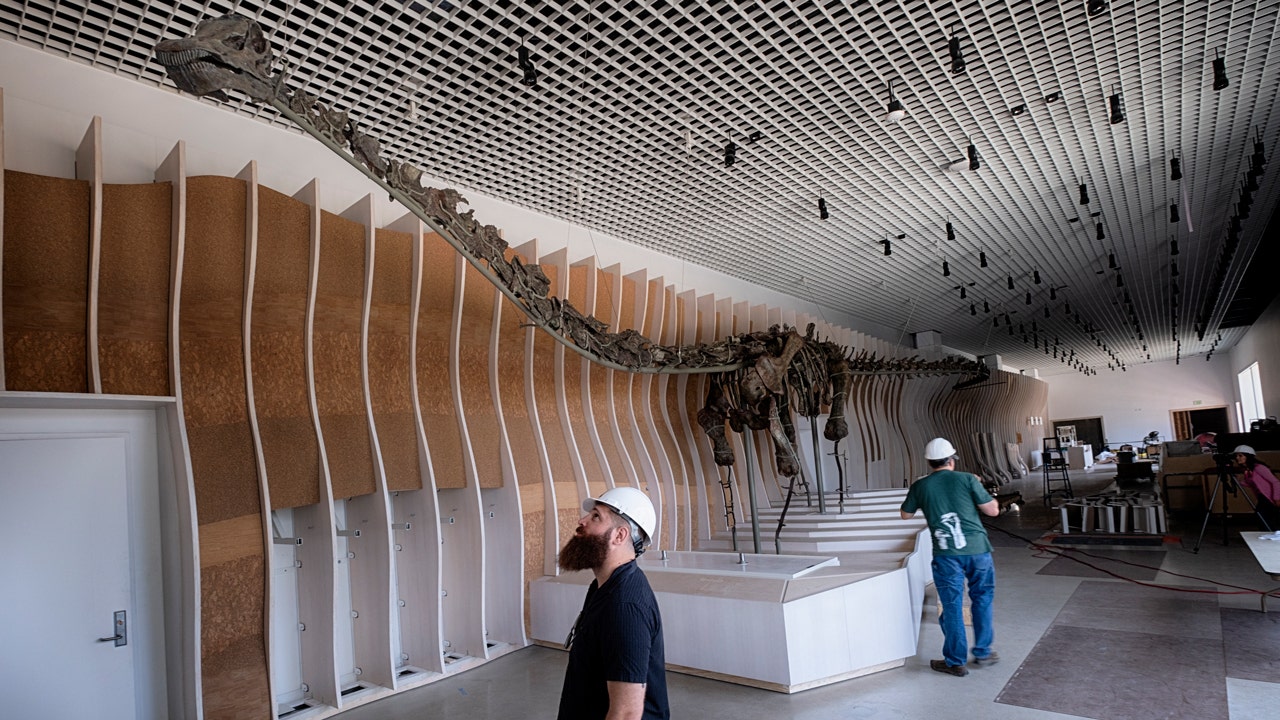For the past two years, world leaders, economists and activists have called for sweeping overhauls to the World Bank and the International Monetary Fund that would make the two lending institutions more adept at combating climate change.
Discussions about how to reform lumbering multilateral bureaucracies can get tedious quickly. But ultimately the debates are all about money. How to make more money available for developing nations that are being battered by extreme weather? And how to make sure poor countries don’t spend too much money servicing their debt?
Experts estimate that at least $1 trillion a year is needed to help developing countries adapt to hotter temperatures and rising seas, build out clean energy projects and cope with climate disasters.
“For many countries, they will only be able to implement strong new climate plans if we see a quantum leap in climate finance this year,” Simon Stiell, the United Nations climate chief, said in a speech last week.
Starting in 2022, a burst of activity had made the prospect of such a quantum leap seem within reach.
Policymakers and economists gathered in Barbados and hashed out an ambitious reform agenda. The president of the World Bank stepped down after coming under fire for not doing enough to address climate change, and was replaced by an executive who promised to embrace climate work. Emmanuel Macron, the president of France, hosted a summit aimed at building momentum for the work.
But at the annual spring meetings of the World Bank and the I.M.F., which are taking place in Washington this week, reality is setting in.
While more money has become available to address climate issues over the last year or so, the sweeping reforms many had envisioned are proving to be out of reach.
Some of that is a process problem. Overhauling 80-year-old international institutions with complicated governance structures and tens of thousands of employees is no small task.
But much of the challenge comes back to money. So far, the countries that control the World Bank — including the United States, Germany, China and Japan — have not allocated huge new sums for climate issues in the developing world, and the private sector has not stepped in to fill the gap.
“The numbers do not show the kind of progress that we really need,” said Rachel Kyte, a visiting professor at Oxford and former World Bank executive. “We’ve got to get a little bit more radical.”
More money
Those calling for reform argue that if only the World Bank took a bit more risk, private sector investors would come off the sidelines with hundreds of billions of dollars in investments for climate efforts in poor countries.
The World Bank has made some meaningful changes during its first year under Ajay Banga, its new president. It is approving loans to developing countries faster, has streamlined the lending process, is offering lower interest rates and has begun lending more money without raising new funds from shareholders.
The bank is also working to raise $100 billion from rich countries and the financial industry, money that it can use to fund projects in the world’s poorest nations.
But even with those changes, that hoped-for wave of private capital has failed to materialize. Banks and institutional investors remain wary of spending too much money on climate projects in the developing world.
Instead, rich countries continue to see an increase in climate investments, while many poorer countries are missing out.
“There’s more financing going into renewable energy in developed markets, but it’s not going into emerging markets and developing economies,” Kyte said. “That’s the big problem.”
Less debt
Nearly as important as making more money available for climate investment is finding ways to unburden poor countries from crushing loads of debt.
This year, developing countries will spend over $400 billion to service their debts, the highest sum they have paid in at least two decades. And there are no signs that wide-scale debt relief is being considered at the spring meetings this week.
As is the case at the World Bank, incremental changes are afoot at the I.M.F. The organization is considering incorporating climate and development goals when assessing countries’ debt repayment plans. Such a move could help deeply indebted nations negotiate better terms and spend more money on climate investments rather than interest payments.
But on the whole, there is still a yawning gap between the mammoth investments that experts say are necessary and the money that is being put on the table.
“We’ve succeeded in converging people around the scale of the problem,” said Avinash Persaud, the special adviser on climate change at the Inter-American Development Bank, and one of the leaders of the reform movement. “Now people are looking for the big solutions to fit that scale. The multilateral development banks have to play a key role, but we can’t do it alone.”
A drought is pushing millions into hunger in southern Africa. What’s behind it?
My colleague Somini Sengupta and I reported today that an estimated 20 million people across six countries in southern Africa are facing what the United Nations calls “acute hunger,” as one of the worst droughts in more than four decades shrivels crops and decimates livestock.
But did man-made climate change cause this drought? The answer is a bit complicated. Let me explain why.
A group of scientists who looked into the causes of the drought that has affected parts of the region reported this week that they couldn’t find any links to climate change. The analysis by World Weather Attribution, a group that specializes in the rapid analysis of weather-related disasters, found that the El Niño, a natural climate pattern, had made the drought twice as likely to happen.
But scientists from W.W.A. and other institutions acknowledged that man-made global warming could have also played a role. Droughts are a lot harder to attribute to global warming than heat waves, scientists say. That is particularly true in southern Africa, in part because reliable weather data there can be hard to come by.
“Considering the scarcity of the meteorological station network across the various countries of southern Africa helps us realize that what we may consider as ‘ground truth’ sometimes is just a statistical extrapolation of the nearest weather station (which may be many kilometers away),” Maria Chara Karypidou, a postdoctoral researcher at Aristotle University of Thessaloniki in Greece who studies the region but wasn’t part of the study, wrote to me.
Deforestation may also have a greater impact that we realize. A study published in the journal Nature last year showed how deforestation in the tropics caused large declines in rainfall between 2003 and 2017. But better understanding the role of deforestation in specific events would also require more precipitation data.
It’s clear that climate change will make life a lot harder in this part of the world, but pinpointing the causes of an extreme weather event is increasingly important as lawsuits and bills seek to hold fossil fuel companies accountable for the damage caused by climate change.
Still, droughts are a part of the natural cycle, too, and it could well be that humans had nothing to do with this one. That doesn’t mean that we can’t better prepare for them, said Maja Vahlberg, a consultant for the Red Cross Red Crescent Climate Centre, and one of the authors of the study. “The impacts on food security and livelihoods show that people are vulnerable to shifts in rainfall,” she said, “regardless of the causes.” — Manuela Andreoni






